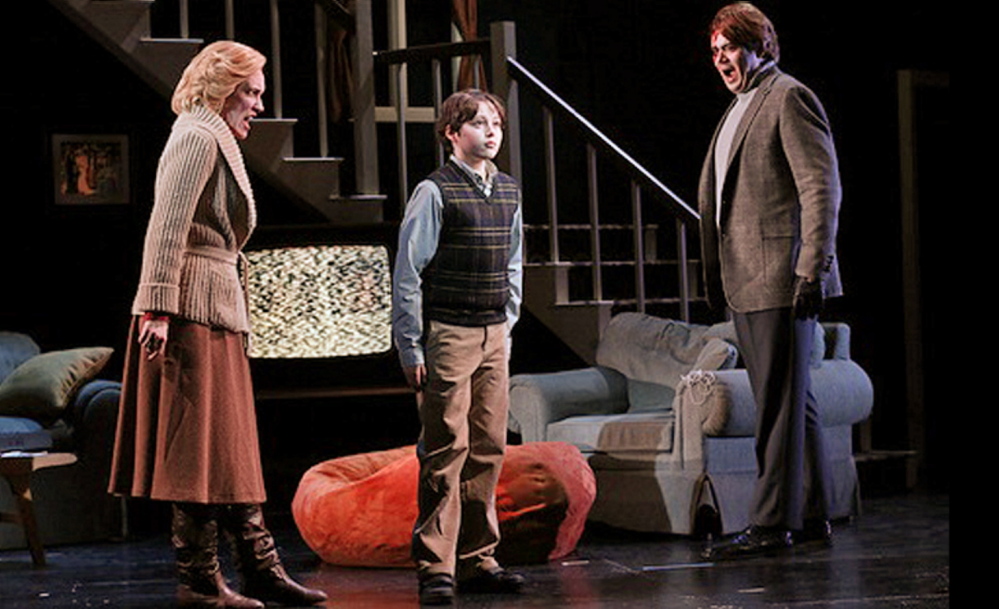Listening to Benjamin Wenzelberg in the recent performance of Leonard Bernstein’s “Chichester Psalms” by the Portland Symphony Orchestra prompted some thoughts about the vexed question of boy sopranos and high-pitched male voices in general.
Wenzelberg is now 14 years old and his career as a boy soprano is about to come to an end. Fortunately, he has other strings to his bow, as my father used to say, as an instrumentalist, composer and member of the Metropolitan Opera’s children’s chorus, to mention a few. He has seen the world and sung in many of the major operatic and choral roles for his voice.
With his musical training and talent, he also could have a career as a singer in a lower register, as has been the case with other boy sopranos.
In most instances, however, musical training is not complete – if it ever is – until the vocal cords lengthen at puberty and the most beautiful natural voice this side of birdsong fades away or becomes a frog’s croak.
Composers use a boy soprano when they want to convey an image of purity or a vision of heaven. This is so even in operas such as Benjamin Britten’s “The Turn of the Screw,” where the role of the warped child Miles is sung by a boy, giving an added frisson to his possession by evil.
Bernstein’s version of the psalm “The Lord is my shepherd” betrays the implied purity by inserting some pretentiously with-it blue notes.
Of course, there are ways to retain the male soprano voice into adulthood, but they have not been practiced since the last of the famous castrati sang in the mid-1800s. Today, that voice is even more evanescent than it once was, when singers often retained their high range, like the young J.S. Bach, until the age of 16. Whatever the reasons for earlier puberty, it is making one of our musical assets more rare all the time.
I noted this at a recent performance here of the Faure Requiem, in which the Pie Jesu was sung by a (female) soprano, losing much of its effect. Church music, which for many centuries was entirely sung by male voices, prized both boy sopranos and altos, or counter-tenors. In this tradition, and in Baroque and Renaissance polyphony, boy sopranos are known as trebles, with an average range of C4-A5.
The term “boy soprano” originated in modern times and is generally attributed to Henry Stephen Cutler (1825-1902), choirmaster of the Cecilian Choir in New York City.
Counter-tenors are becoming more popular nowadays, due to renewed interest in Baroque opera. I remember how surprised I was when first hearing Purcell’s “King Arthur,” when the title role was sung by a counter-tenor. The voice, which The Oxford Companion to Music refers to as a kind of falsetto, was the standard for portraying heroes in those days. It has an entirely different quality from a treble, perhaps more strained, as befits a hero.
My favorite boy soprano part is the final scene of Janacek’s “The Cunning Little Vixen,” in which a young frog proclaims the eternal cycle of nature. I’d like to hear Wenzelberg sing that before it’s too late.
Christopher Hyde is a writer and musician who lives in Pownal. He can be reached at:
classbeat@netscape.net
Copy the Story LinkSend questions/comments to the editors.



Success. Please wait for the page to reload. If the page does not reload within 5 seconds, please refresh the page.
Enter your email and password to access comments.
Hi, to comment on stories you must . This profile is in addition to your subscription and website login.
Already have a commenting profile? .
Invalid username/password.
Please check your email to confirm and complete your registration.
Only subscribers are eligible to post comments. Please subscribe or login first for digital access. Here’s why.
Use the form below to reset your password. When you've submitted your account email, we will send an email with a reset code.